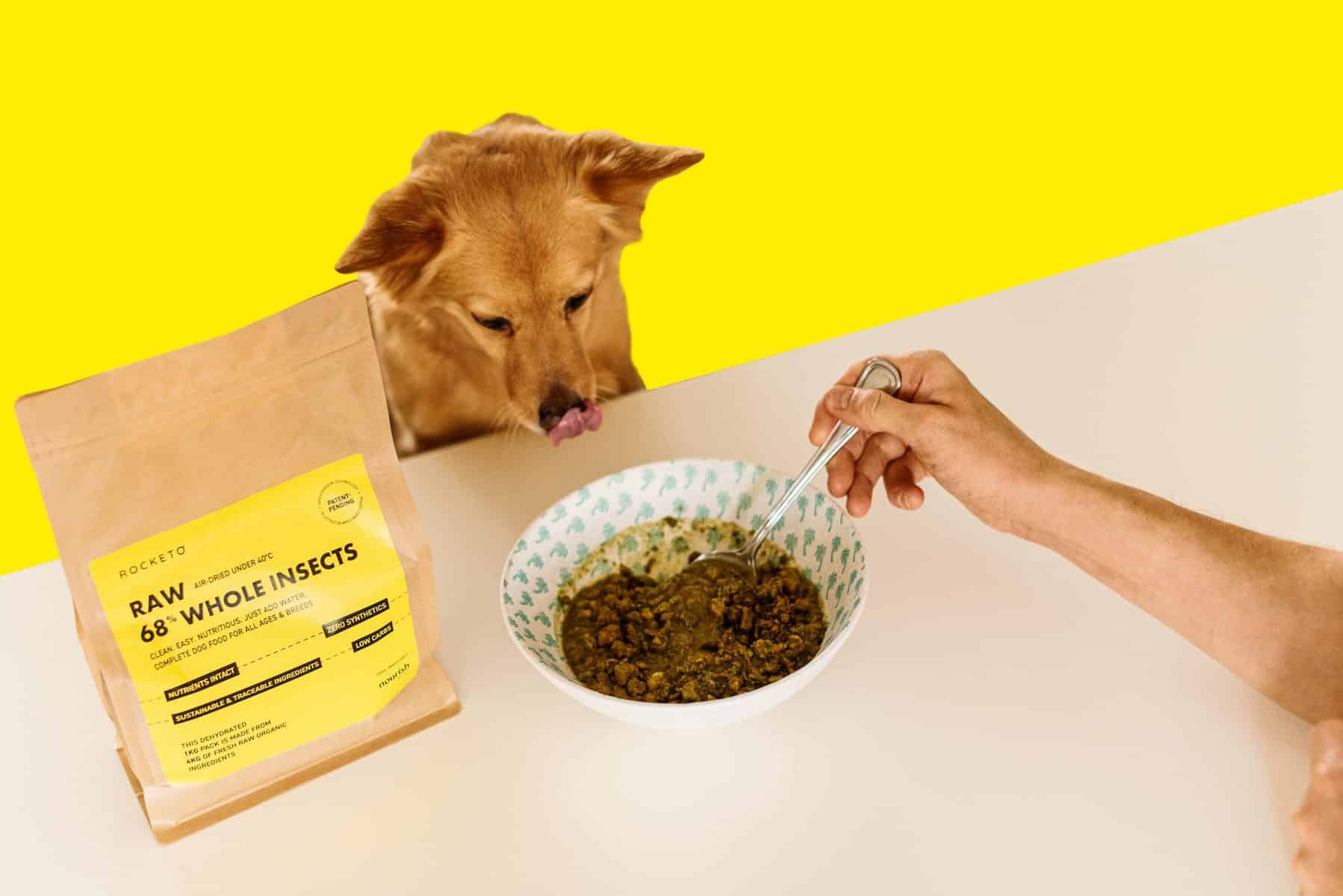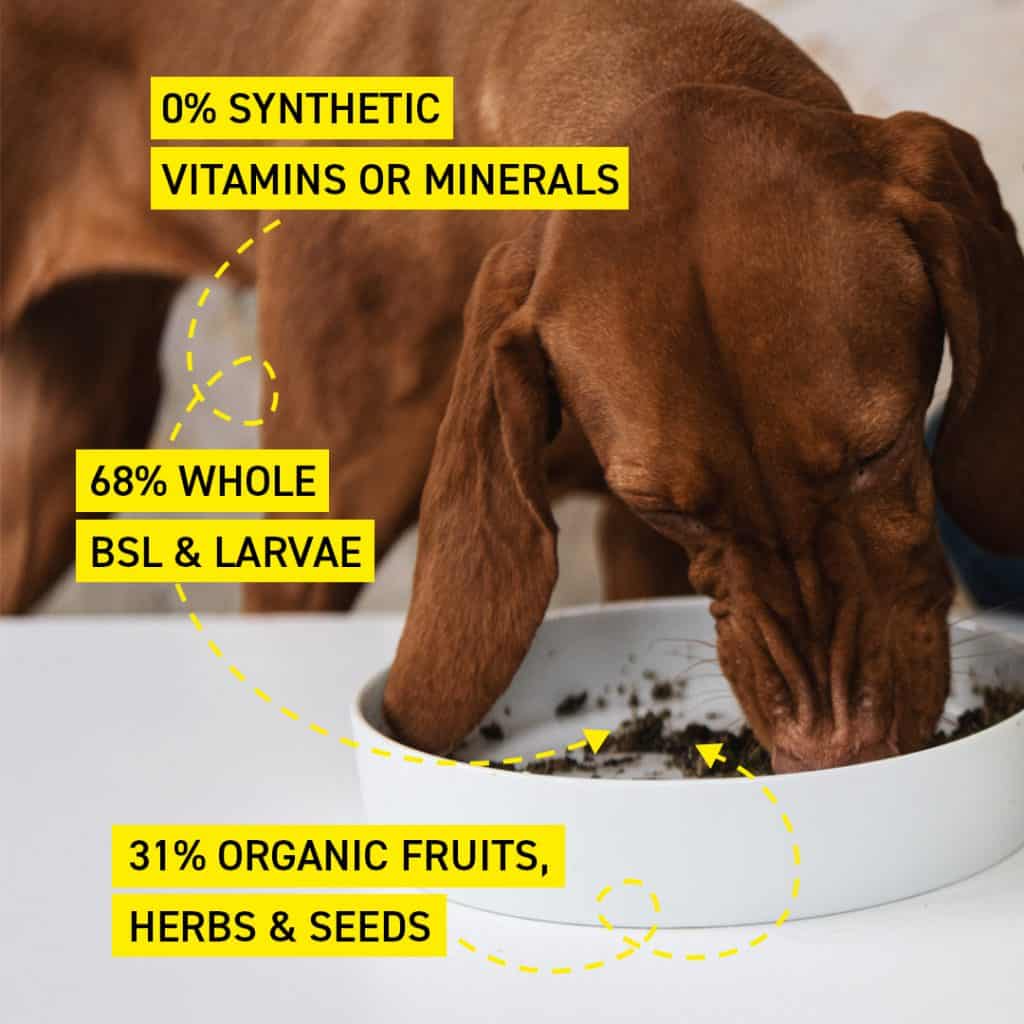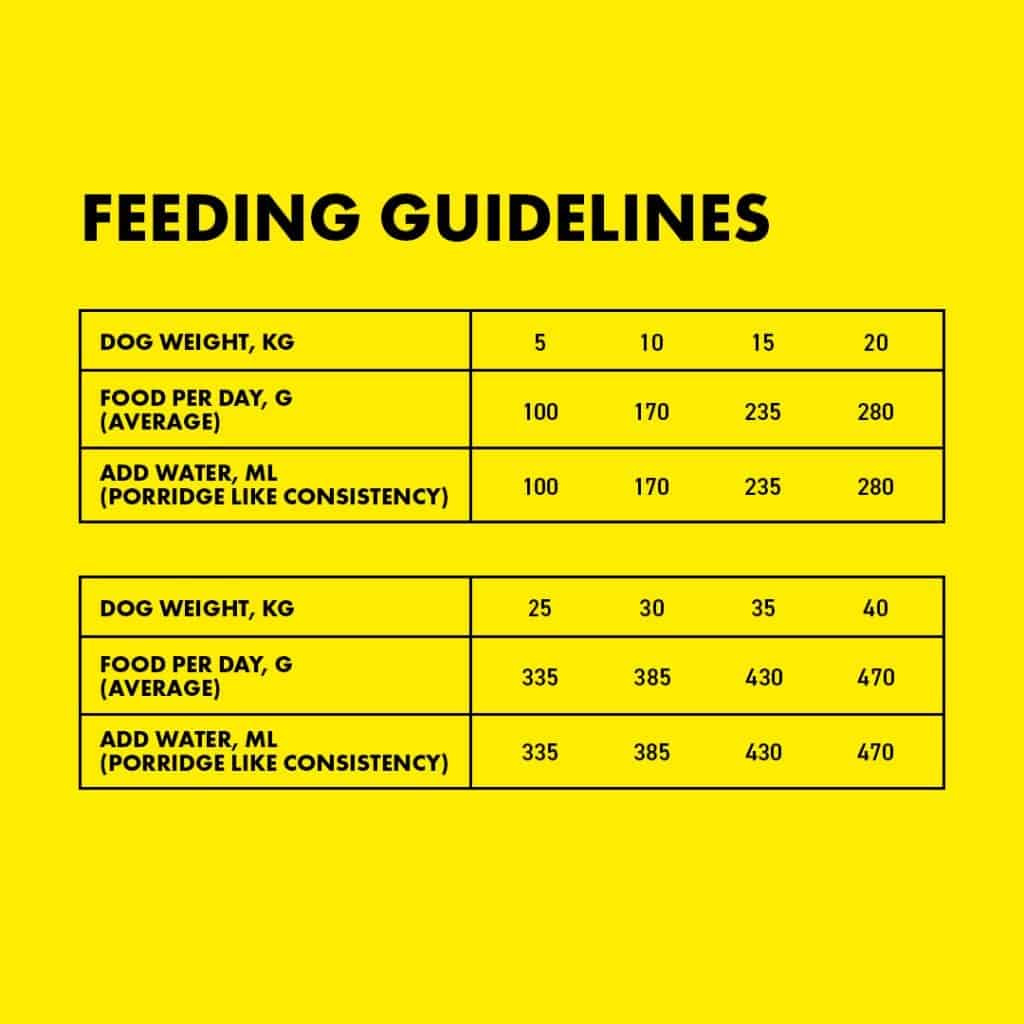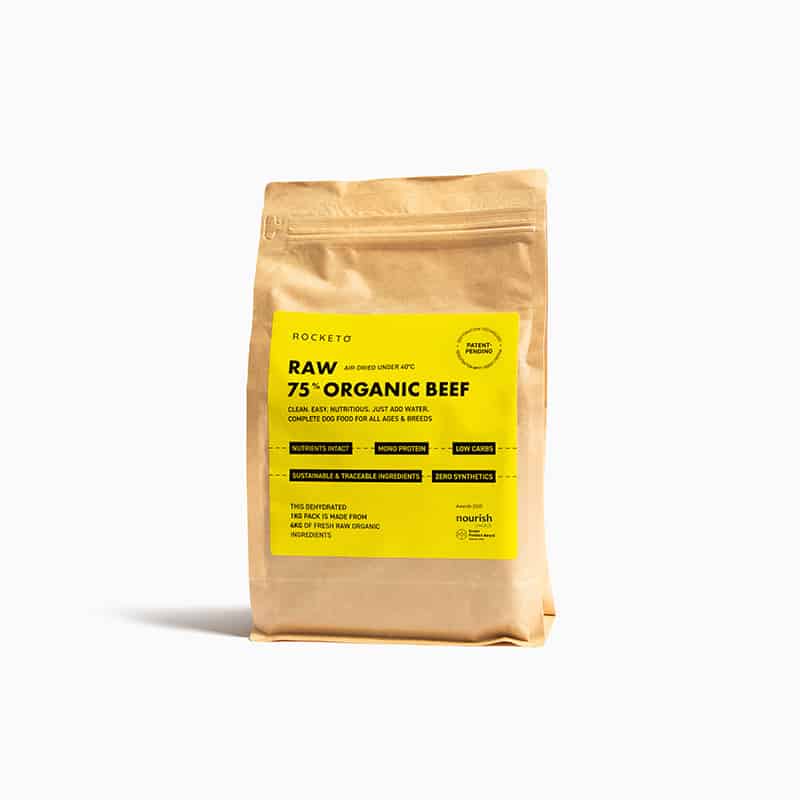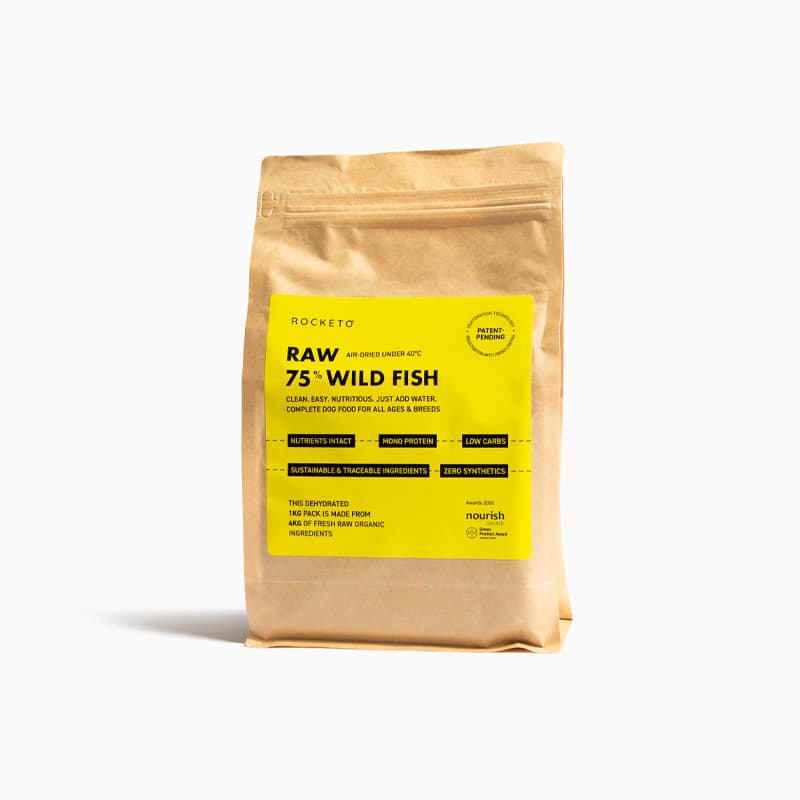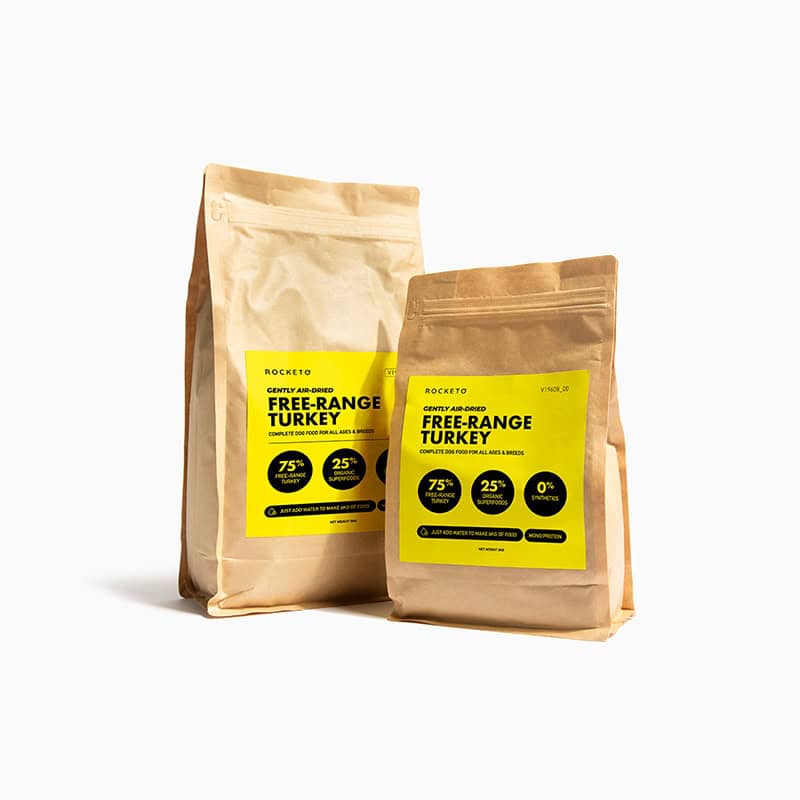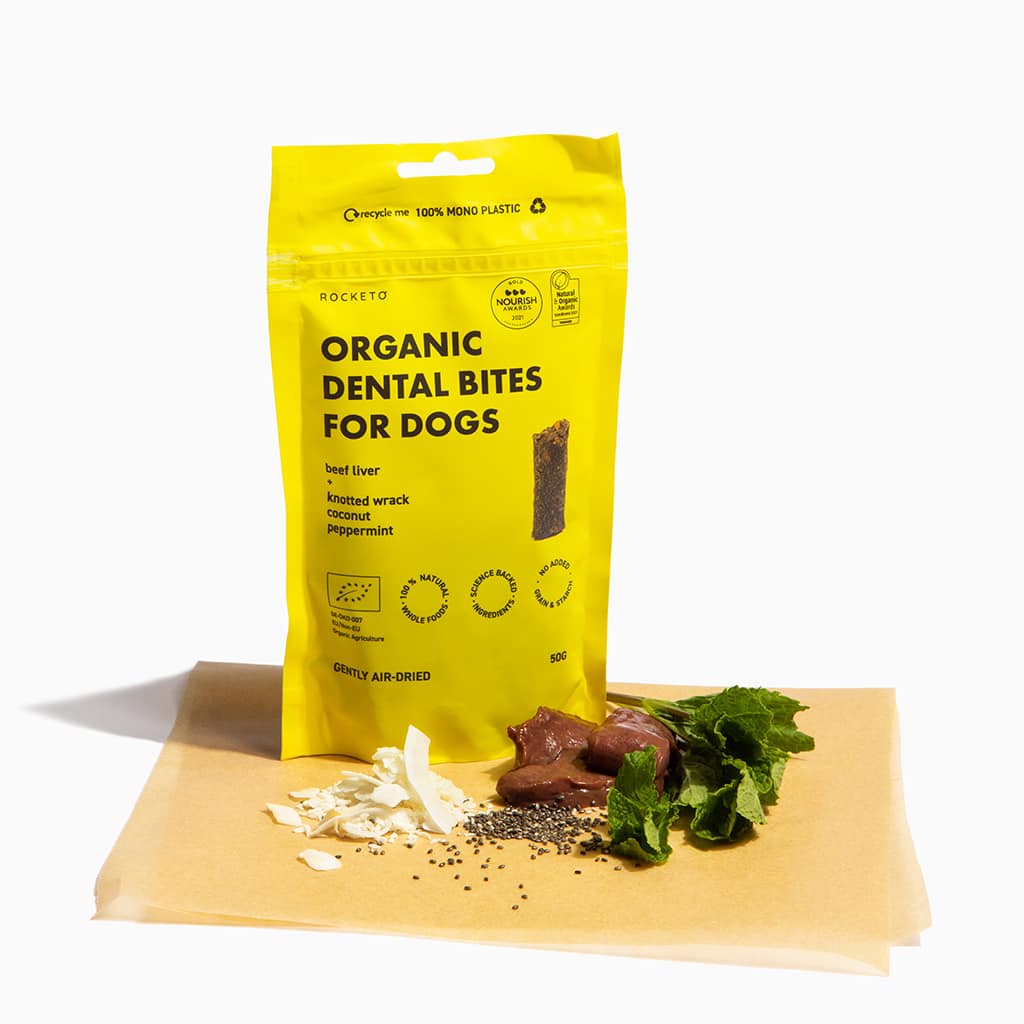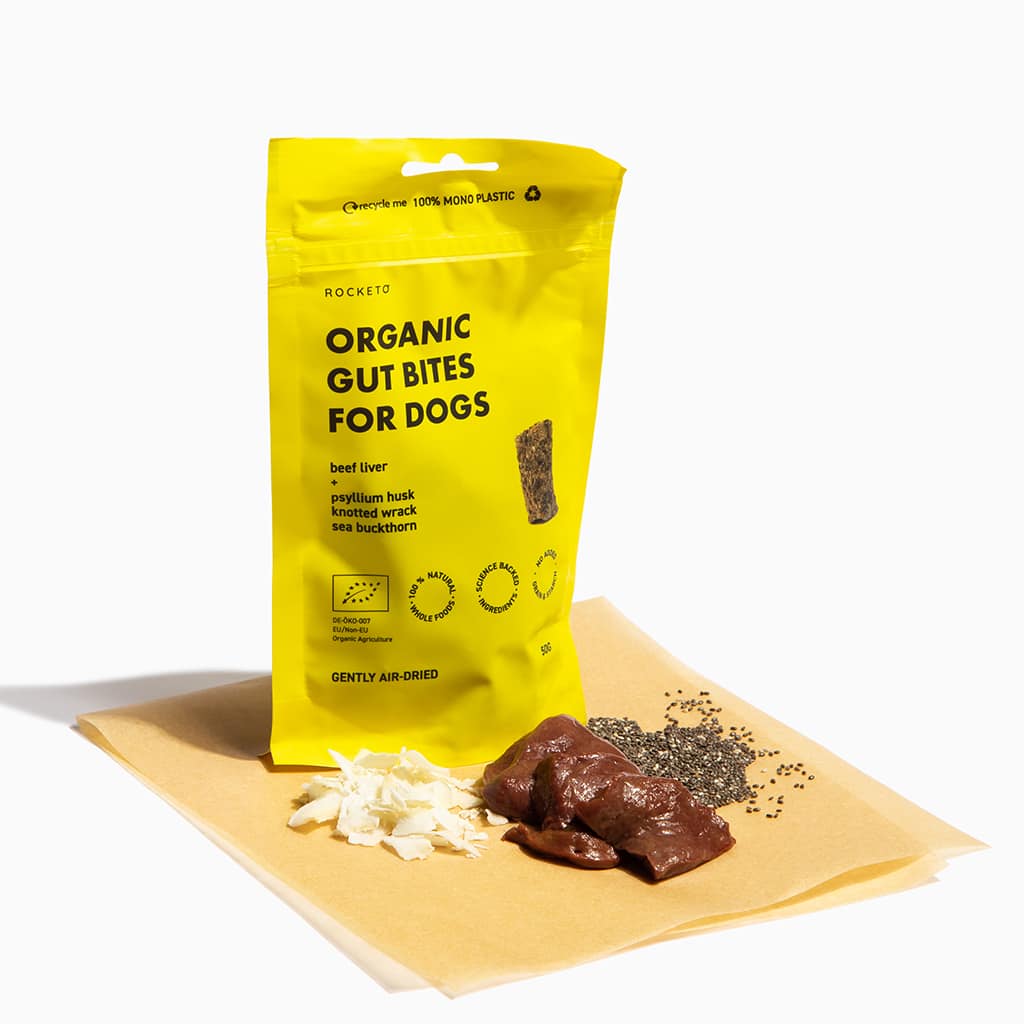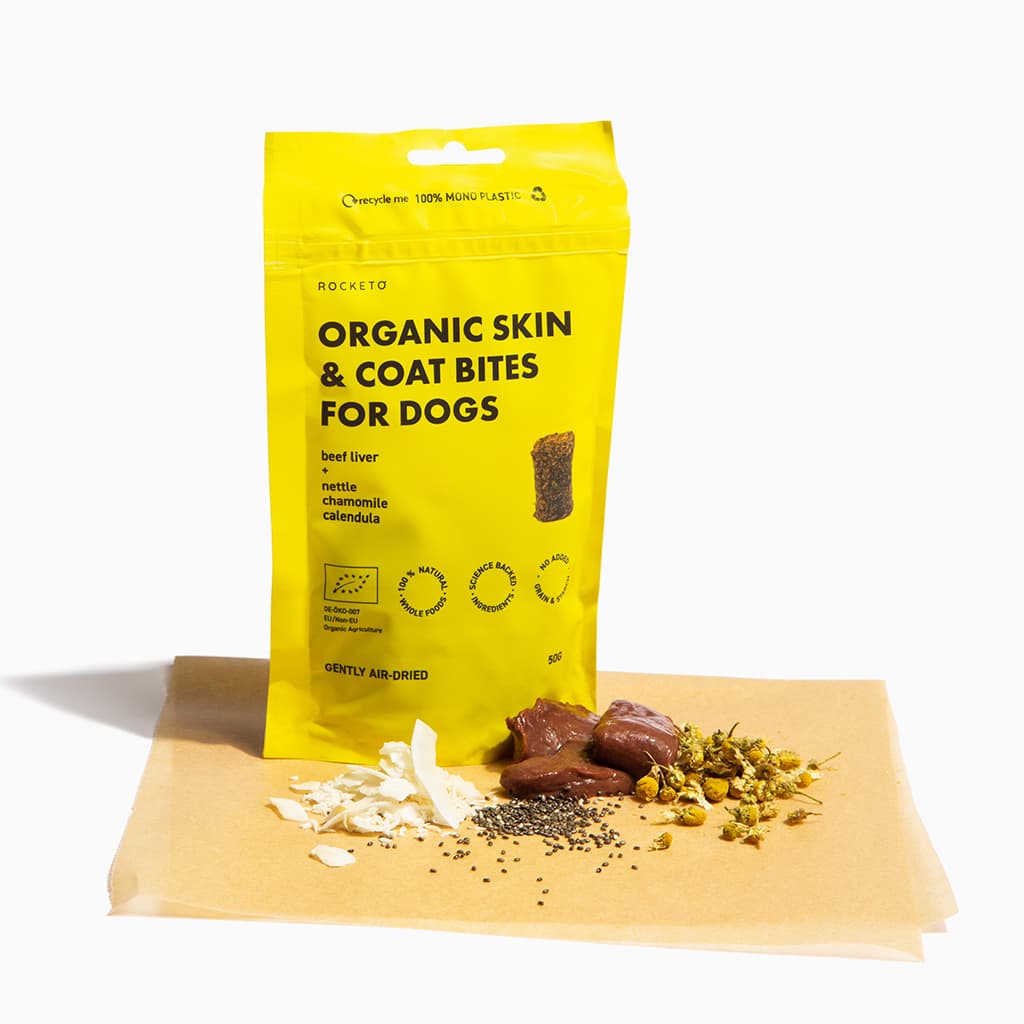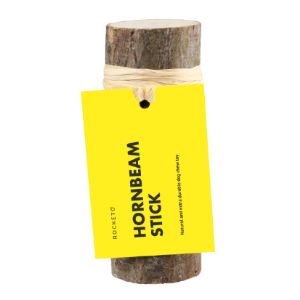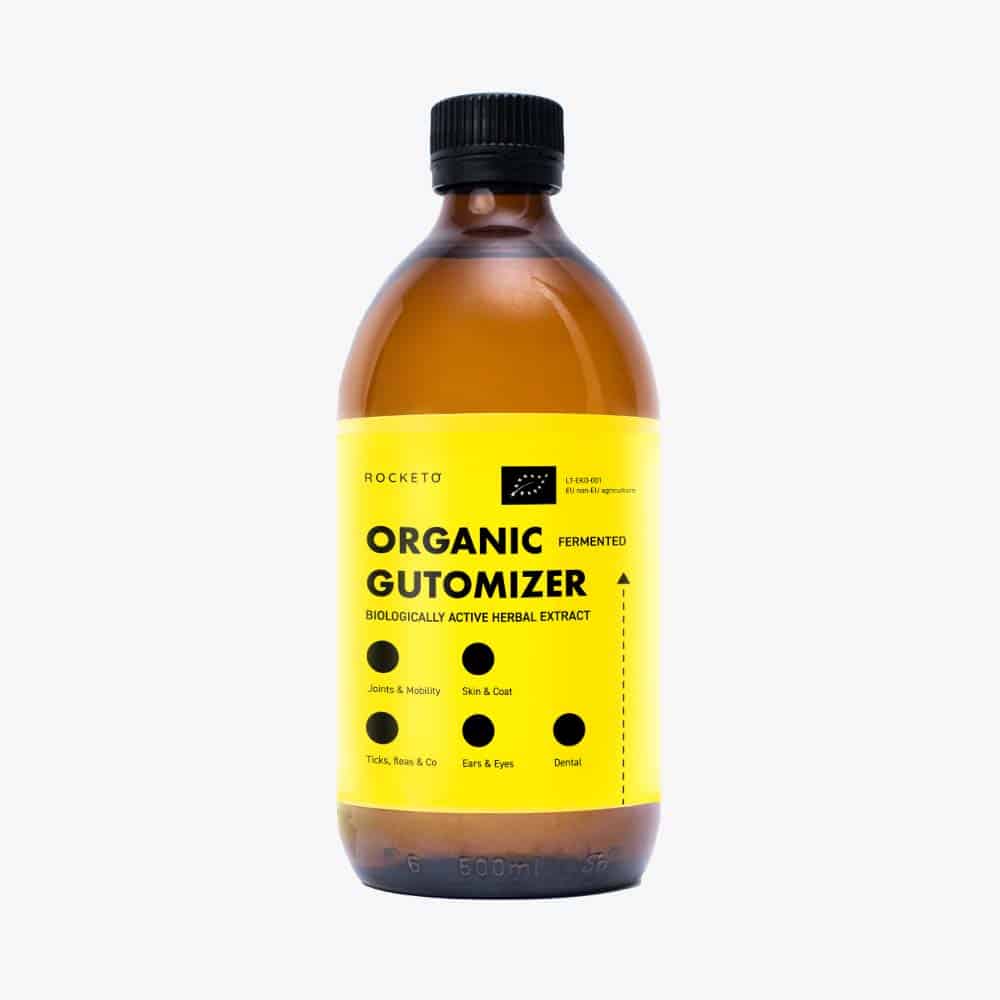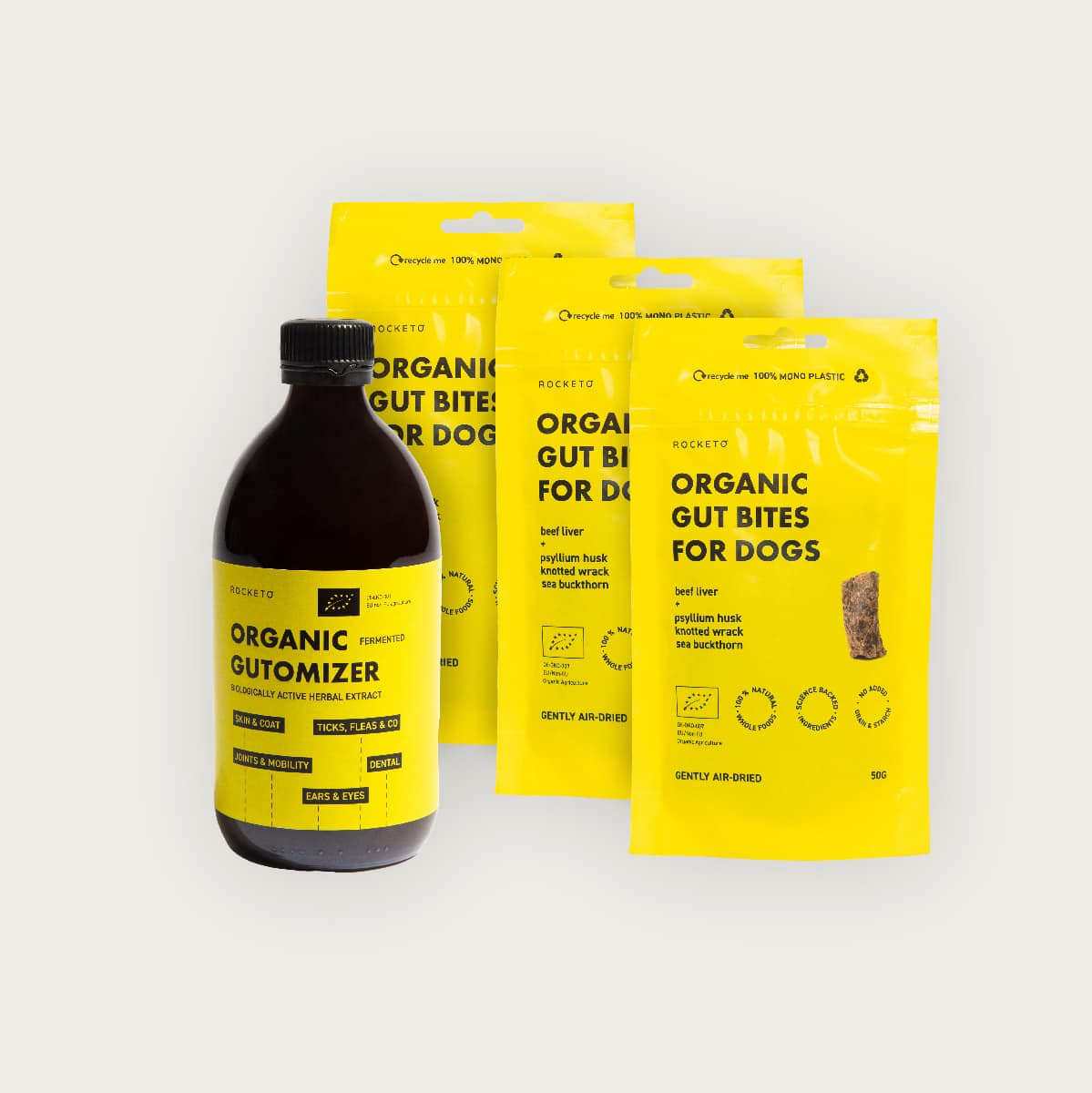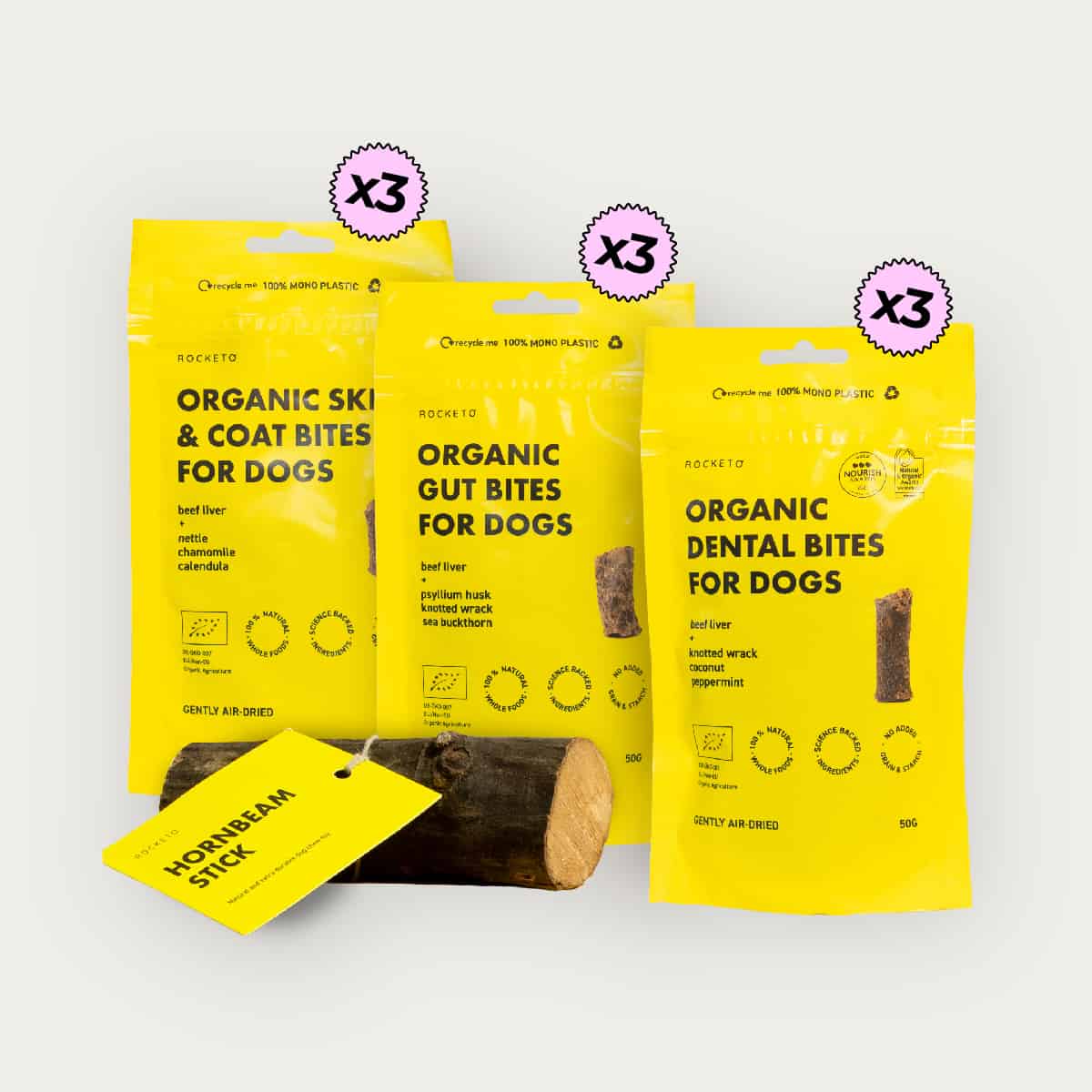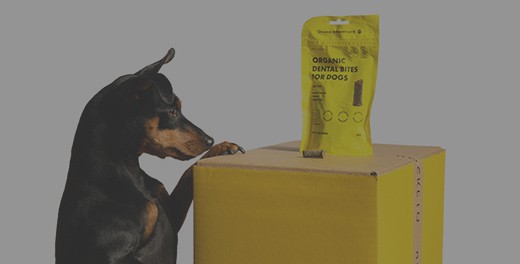Did you know that Insects are a great hypoallergenic alternative to meat proteins for dogs?
Not only high in protein, insects also provide other essential vitamins and minerals and have a deliciously nutty, earthy taste. If your dog goes wild for peanut butter, they LOVE our 68% WHOLE INSECT complete nutrition.
Why on earth insects?
Environmentally minded pet owners are choosing to feed their animals meals made out of crickets, mealworms and black soldier flies in an attempt to curb the huge carbon emissions produced by raising livestock for traditional, meat-based diets.
Experts say pets can be fed insects as they are rich in protein, and that farmed species can also contain high fats, oils, minerals and vitamin levels. Preliminary research also suggests that when insects are farmed commercially, emissions, water, and land usage is lower than farming livestock.
Insect-based dog foods are just one of the innovative new trends aimed at sustainable resources. People around the world eat bugs. Dogs eat bugs. Bugs are a compact source of high protein; they don’t take acres of farmland or eat tons of food; they don’t even need water. They don’t emit gases that are bad for the environment. And let’s face it, few of us feel all that guilty when they’re harvested, although at least one company does the harvesting after they’ve gone into hibernation, so they basically are unaware of their impending transformation into powdered protein. Bugs are high in protein, low in fat and cholesterol, and rich in nutrients like Omega-3 and Omega-6.
Who are growing the insects?
According to the Pet Food Manufacturers Association, there are seven insects authorised by the EU for use as pet food ingredients. The farmed insects are fed on spent grains, palm kernel, fruits and vegetable crop by-products, and while most farms were originally located in the tropics there are now more than 100 in Europe. ROCKETO recipe contains the larvae supply from Poland.
How to feed pooches with bugs?
It’s beneficial to stick to one animal protein type at a time, this allows you to rule out proteins if your dogs are sensitive to them much easier, this is why single protein foods are important when dealing with sensitivities, many vets are even opting for insect-based formulas for extreme sensitivities. The more novel the protein source, the less likely a dog is to have a sensitivity to it.
If you are switching your dog’s diet, it is always advisable to follow a “transition” period such as:
- Days 1-3: ¾ Old Food + ¼ New Food
- Days 4-6: ½ Old Food + ½ New Food
- Days 7-9: ¼ Old Food + ¾ New Food
- Day 10: 100% New Food
This handy chart shows you how much your dog is likely to need each day. It is intended as a guide, so bear in mind that your dog’s ideal quantity of food may vary depending on its breed, activity level and the temperature outside. Always check with your vet if you are unsure about your dog’s ideal weight. For adult dogs, not all life-stage. Adjust the water amount based on your dog’s preference. Always ensure clean fresh water is available to your pet at all times.
